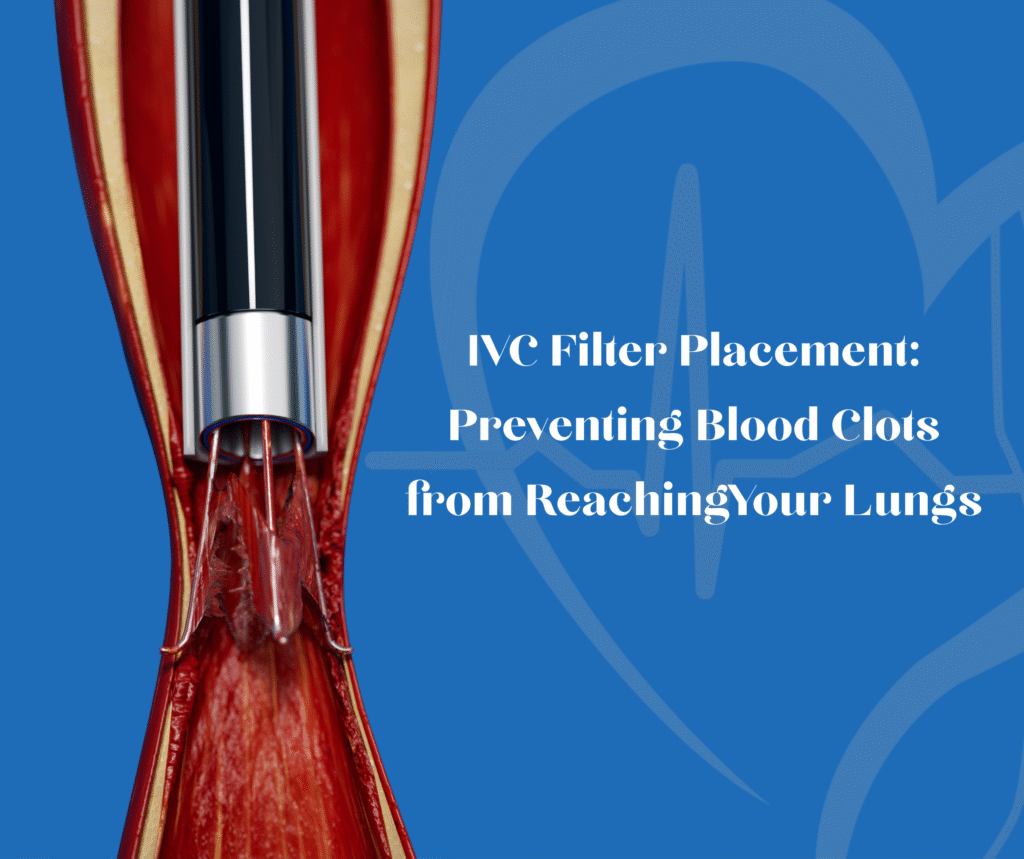
At times, when it comes to protecting oneself from dangerous blood clots, the doctor may need to take some additional measures.
This is where the IVC filters come in. It’s a tiny device, yet it can save lives.
Think of it more as a safety net in your body.
It is a small device that gets inserted into your inferior vena cava (IVC). It’s the large vein returning blood to the heart from the lower half of your body.
It’s ready to trap any clot that may be attempting to go up to your lungs and give you a pulmonary embolism.
The device resembles a spider, with thin metal struts allowing free passage for blood, while clots become entrapped within them. It stays out of your while doing an important job.
You may be a candidate for an IVC filter if you have certain health conditions. You would be advised by your doctor to get one if:
The placement of an IVC filter is entirely dependent on your specific medical situation. This will be something your vascular specialist weighs up in terms of benefits versus any possible risks.
Related: Can DVT Go Away on Its Own?
Here’s something great about this: the procedure for placing the IVC filter is not a full-scale surgery that requires a long hospital stay.
The procedure is typically performed in an ambulatory setting within one hour. Your physician will:
Most people can go home that same day. Most return to their regular activities within a few days. You may have some mild soreness at the site of insertion, but this is uncommon.
IVC filters come in two types. Temporary (retrievable) filters can be taken out.
Once your clot risk decreases, typically after you have healed from surgery or can safely resume taking blood thinners, these can be removed.
Permanent filters are those that are kept in place indefinitely.
Your doctor will determine what is best for you. Many patients receive temporary filters that can be removed within a few weeks to months when they’re no longer needed.
Having an IVC filter in place does not in any way mean keeping your life on hold. Most individuals fully return to their normal activities without any problems. You will need to:
If you have a retrievable filter, the doctor would generally schedule a removal appointment.
You must be aware of the steps that can be taken to prevent these blood clots first.
IVC filters will be there for your peace of mind in times when conventional treatment modalities prove insufficient or impractical.
Don’t put off dealing with your vascular issues.
If you’re at risk or have concerns regarding blood clots or IVC filter placement, our specialized team will walk you through it all.
Contact us at Heart Vascular & Leg Center for a consultation, and we’ll devise a treatment plan suited to you.
How long does an IVC filter last?
Some filters are temporary, remaining for weeks to a few months.
Some are permanent, lasting for life. Your doctor will let you know which one you have to get.
Is it a painful procedure?
Most patients feel minimal discomfort during the procedure, which is further helped by local anesthesia. Mild soreness typically follows but is easily controlled.
Can I travel with an IVC filter?
Yes, one can travel normally with an IVC filter. Let airport security know if need be, although most filters do not trip metal detectors.
What are the risks?
Just like any medical procedure, there are small risks, including:
Your doctor will go over these with you beforehand.
© Copyright 2024 Vascular Health Partners LLC. All Rights Reserved
Designed By CyberWorx